84 F. high in the Twin Cities Friday.
76 F. average high on June 6.
58 F. high on June 6, 2013.
Trace of rain at MSP International Airport yesterday.
June 6, 1939: Grapefruit-sized hail fell in Rock County killing hundreds of farm animals near Hills.
.27" rain predicted this morning (NAM model).
.80" additional rain Sunday night into Monday.
24-7
Remember
a time when weekends meant errands, yard work, naps and downtime? I
don't either. Today many of us are checking e-mails, texts and work
demands around the clock. We're on call, even if it's on a Sunday, the
(alleged) "day of rest". Right.
Sadly, weather doesn't take the
weekend off - in fact meteorologists are even more hyper-sensitive to
gyrations in the weather on Saturdays and Sundays, since more of us are
outside, more vulnerable to the elements. More weather-aware.
"Will
it rain between 6 and 8 PM?" my wife barked into the phone yesterday.
"I'm putting stucco on today, what time will it rain in Minnetonka?" a
friend just texted. "If it pours I'm going to track you down!"
Stand in line.
Note to self: one good radar app on your phone can save a lot of time and aggravation. We're all armchair meteorologists now.
A
sloppy cool front keeps rain showers in the forecast thru midday; skies
may dry out late in the day but temperatures hold in the 60s. A D+ day
weatherwise, I fear. Sunday looks better with blue sky and 70s, a better
day to troll The Edina Art Fair.
Showers Monday gives way to a
drier sky and warming temperatures next week. The approach of a hot
front sparks more late-week storms; sultry 90F readings are possible by
next Sunday.
Hints of Early July Next Week?
The 6-10 day extended outlook for jet stream steering winds at 500 mb,
about 18,000 feet above the ground, shows a lingering trough sparking
showers and cooler than normal temperatures over the Pacific Northwest.
East of the Rockies an expanding heat dome will push slowly north,
sparking numerous 90s over the southern half of the USA. Map: NOAA.
Weather Hazards Next Week.
Drought conditions continue to worsen from west Texas and the Oklahoma
Panhandle to California next week with little or no rain. Meanwhile
heavy showers and T-storms are likely from Tulsa and Little Rock to
Louisville, another potential for downpours over the Upper Midwest.
From Record Drought to Biblical Floods.
Mother Nature is setting a whole new standard for weather-whiplash over
the southern Plains; portions of Oklahoma expected to go from
exceptional drought to extensive flooding. NOAA models show as much as
6-8" or more of rain, with flash flooding prevalent into the Middle
Mississippi Valley. Some 2-3" amounts are expected across FLorida, with
1-3" amounts extending into the Mid Atlantic region. Map: NOAA.
Wet Start to June.
Dr. Mark Seeley has updated information on nitrogen fertilizer loss due
to recent heavy rains and resources farmers can turn to for more
information. Here's an excerpt with rainfall amounts from the downpours
of late May and early June at this week's installment of
Minnesota WeatherTalk: "...
The
heaviest rains were concentrated in central and southern counties.
Belle Plaine reported nearly 5 inches as did Onamia. In the south
Redwood Falls reported 4.75 inches, Luverne 4.13 inches, and Winnebago
5.29 inches. Many farmers reported standing ponds of water in their
freshly planted fields. Portions of the Crow River, Sauk River, and
Buffalo Creek all rose to near or above flood stage due to heavy runoff..."
No El Nino Yet, Still Expected This Summer.
NOAA CPC has raised the odds of El Nino conditions from 65% to 70% this
summer, rising to 80% by autumn and winter. Here's an excerpt of an
update at
Climate Central: "...
The Climate Prediction Center, part of the National Oceanic and Atmospheric Administration, issued its latest monthly outlook
on the state of the El Niño-Southern Oscillation (or ENSO, the name for
the broader phenomenon) on Thursday, with little change from last
month’s update. The only differences were a slight increase in the
probability that El Niño will be in place this summer,
and a tentative guess at how strong that El Niño might turn out to be.
“There’s no big game changer there,” said Michelle L’Heureux, a CPC
meteorologist who helps put together the outlooks..."
Animation credit above: "
Animation of sea surface temperatures in the tropical Pacific Ocean." Credit: NOAA.
Disaster Experts Crafting Plan to Mitigate Natural Disasters.
The challenge is to play offense, not just defense, and use money to
help communities to be better prepared for inevitable natural disasters.
The Wall Street Journal has the story - here's a clip that caught my eye: "...
Repairing
the damage caused by natural disasters has cost more than $200 billion
globally in three out of the last four years, but 96% of that money was
spent on recovery, and only 4% on boosting readiness, according to
Kristalina Georgieva, the E.U. Commissioner for International
Cooperation, Humanitarian Aid and Crisis Response. Yet every dollar
spent on disaster risk reduction would slash up to $7 from the
post-disaster reconstruction bill, Ms. Georgieva said at the conference..."
The 2014 India Monsoon Season: The Most Important Forecast in the World.
Because if those rains don't come, like clockwork, crops may fail,
threatening millions. This year El Nino may throw a monkey-wrench into
the monsoon signal; here's a clip from a story from Eric Holthaus at
Slate: "
It’s
about to start raining in India, but not quite yet. That’s big news in a
country where about half of the 1.25 billion population is engaged in
agriculture. Each year, 70 percent of India’s annual rains come during
the summer monsoon months of June to September, when rising warm air
over the subcontinent draws moisture northward from the relatively cooler Indian Ocean. This year, thanks in part to El Niño, the outlook is grim..."
Edyn Smart Garden Monitoring System Helps Your Garden Grow. So much technology, so little time. Here's a clip from a story at
Gizmag: "
It's
not always easy to find the time to research the ideal plants for your
garden and then make sure they're given the attention they need to
flourish. Edyn was developed to help users monitor and track
environmental conditions in their garden, provide guidance on how
conditions can be improved and water the plants automatically as
required. The smart garden system comprises a sensor, a smart
water-valve and a mobile app..."
It's Baaack.
Another reason to go on living - the release of Sharknado 2 is
imminent, and I'm giddy with excitement. Sharknado 1 was so bad it was
actually good, and we have high hopes for the sequel. Here's a link to
the trailer from
Vulture: "
Remember
the worldwide, internet-fueled phenomenon that was Sharknado? SyFy
expectedly fast-tracked its sequel, subtitled "The Second One," and
here's your first look. The whole gang is back: Tara Reid, Ian Ziering,
that other girl. Prepare your hashtags."
Nailing The Forecast. Thanks to Mark Anderson at
andertoons.com for getting the weather report right.
TODAY: Cool, gray and showery. Winds: N 10-15. High: 65
SATURDAY NIGHT: Slow clearing, cooler. Low: 51
SUNDAY: Plenty of sun, much better. Winds: NE 8. High: 75
MONDAY: More clouds, passing shower or two. Wake-up: 56. High: 77
TUESDAY: Partly sunny, warming up. Wake-up: 59. High: 82
WEDNESDAY: Clouds increase, PM T-storms. Wake-up: 62. High: near 80
THURSDAY: Sunny, breezy and less humid. Wake-up: 58. High: 79
FRIDAY: Unsettled. Another round of storms possible. Wake-up: 60. High: 83
Climate Stories...
The Health Impacts of Climate Change on Americans. The White House released an
8-page PDF
describing impacts that are already manifesting themselves, from an
increase in asthma to a 21 day longer pollen season in the Twin Cities.
Here's an excerpt: "...
climate change has resulted in more frost-free
days and warmer air temperatures which can, in turn, cause a greater
production of plant-based allergens. For example, the length of ragweed
seasons has increased in some communities in the northern states.
Minneapolis, Minnesota's season increased by 21 days, while ragweed
season in Fargo, North Dakota increased by 19 days. Higher pollen
concentrations and longer pollen seasons can increase pollen-related
allergies and asthma episodes that lead to diminished productivity and
lost school days..."
The Climate Domino.
Here's a snippet of an Op-Ed about the new EPA regulations on CO2
impacting coal-fired power plants around the USA from Paul Krugman at
The New York Times: "...
For
what it’s worth, however, the attacks on the new rules mainly involve
the three C’s: conspiracy, cost and China. That is, right-wingers claim
that there isn’t any global warming, that it’s all a hoax promulgated by
thousands of scientists around the world; that taking action to limit
greenhouse gas emissions would devastate the economy; and that, anyway,
U.S. policy can’t accomplish anything because China will just go on
spewing stuff into the atmosphere..."
Will New EPA Power Plant Rules Trade Carbon for Methane?
The shift that's already underway to lower polluting natural gas is a
positive step, since natural gas emits roughly half as much CO2 into the
atmosphere when burned. But leaking well caps can leak methane into the
air, which is has 20 times the heat-trapping potential of carbon, as
pointed out in this article at
Christian Science Monitor; here's a clip: "...
Since natural gas burns much cleaner than coal, producing about half as much carbon dioxide,
making the switch from coal to gas can go a long way to achieving the
rest of the remaining reductions, the administration seems to be
thinking. The big problem is that we don’t know what’s happening with
methane emissions. Natural gas, which is essentially methane (CH4), may
burn cleaner than coal, but what happens when it isn’t burned? As a
greenhouse gas, methane emitted into the atmosphere is more than 20 times as potent as carbon dioxide over a 100-year period..."
Photo credit above: "A
view of the Paradise Fossil Plant in Drakesboro Ky., on Tuesday. The
Environmental Protection Agency’s new regulations for reducing carbon
emissions may increase methane emissions, writes Cunningham." Dylan Lovan/AP.
In Praise of Second Best. In an Op-Ed
The Economist
argues that a price on carbon would have been better, but EPA's new
plans to cut carbon emissions at power plants is still welcome,
nonetheless. Here's an excerpt: "...
So President Barack Obama’s
proposal on June 2nd to cut CO2 emissions from power plants is welcome.
Power stations are the single biggest source of greenhouse-gas emissions
in America, accounting for a third of the total. The plan to cut them
by 30% from their 2005 level by 2030 is the biggest step an American
president has taken to curb climate change for several decades (which
admittedly is not saying much)..." (Image above: EPA).
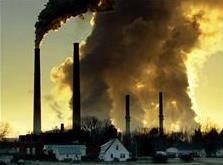
Green States and Black States: Obama's Climate Plan Paints U.S. in New Colors. Here are a couple of clips from an interesting article at
InsideClimate News: "..
The
blackest states would be places like West Virginia, Kentucky, North
Dakota and Wyoming, where dependence on coal is highest, alternatives
are fewer and political opposition is red hot...Some of these states
have already been achieving impressive results in reducing carbon
emissions—not just through a shift to natural gas, but also through
renewable sources of power. According to a new report
from the American Wind Energy Association the top ten states where wind
is replacing carbon energy are Texas, Illinois, California, Colorado,
Iowa, Missouri, Oklahoma, Wisconsin, Minnesota and Wyoming...."
Will The New EPA Rules For Power Plants Inspire Other Countries?
Or will they continue to ramp up coal-fired energy and have tarrifs
slapped on their products and services? Here's a clip from a story at
The Washington Post: "...
Most
climatologists believe that sticking to the two degree number is
important for avoiding widespread, and economically costly, extreme
weather events. The EPA proposal cutting coal plant emissions to 30
percent below the 2005 level by 2030 is seen as a major step forward,
but falls short of the 42 percent level many negotiators believe is
needed for the United States to stick to the 2-degree target. The United
States has not made any commitments regarding targets beyond 2020..."
Climate Change is Getting Worse. So Why Is Antarctica's Ice Sheet Expanding? Here's a clip from an explanation from The Conversation and
The Washington Post: "...
This year could well see a new record set for the extent of Antarctic sea ice – hot on the heels of last year’s record,
which in turn is part of a puzzling 33-year trend in increasing sea ice
around Antarctica. Unsurprisingly, these records have provided fodder
for those wishing to cast doubt or resist action on climate change..."
7 Reasons America Will Fail on Climate Change.
I'm not nearly as pessimistic, although I agree that on our current
(global) trajectory keeping temperature rises below 2C may be futile.
Adaptation will be a big part of the equation going forward. If you're
in a happy, upbeat mood try not to read this decidedly gloomy view from
Ezra Klein at
Vox; here's an excerpt: "...
Either
way, we've waited so long to begin cutting emissions that two degrees
looks flatly impossible. We're on track for 4°C of warming — which is
nearly the temperature difference between the world now and the Ice Age.
That's a nightmare for the planet. The World Bank tried to model it and
realized that they had no idea what would happen — or whether humans
could manage. There's "no certainty that adaptation to a 4°C world is
possible," they concluded..."
Image credit: NOAA GFDL.
7 Reasons Why America Should Succeed On Climate Change.
Joe Romm takes a much more optimistic look at what can be done to
mitigate greenhouse gas emissions and keep future temperature increases
in a range that are tolerable. Here's an excerpt from his post at
Climate Progress: "...
I asked one of the country’s top climatologists, Michael Mann, who criticized this story in a tweet to comment. He wrote:
Defeatist
framing is not helpful and threatens serving as self-fulfilling
prophecy. We all grew up reading not “The Little Engine that Couldn’t.”
The only real obstacle to averting dangerous climate change is lack of
willpower and imagination. We must avoid messaging that seems to condone
that, as the title of the Vox piece unfortunately does.
Over
the past 8 years of blogging at Climate Progress, I have tried to focus
on what the science says we should do (slash CO2 ASAP to avoid
catastrophe) and what technology says we could do (as much as we need
to) and what economics suggests it would cost (not bloody much)...." (Image above: NASA).

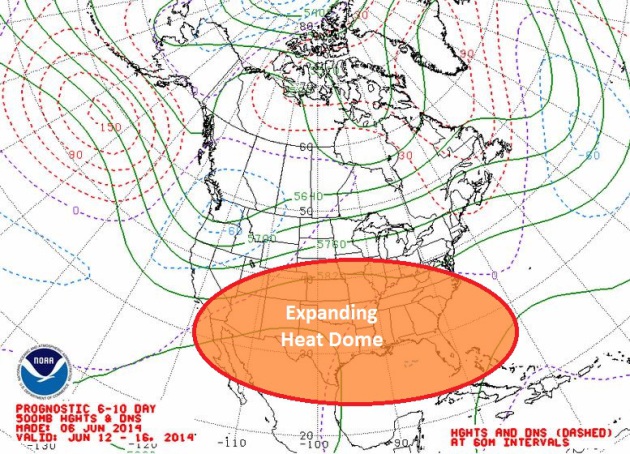
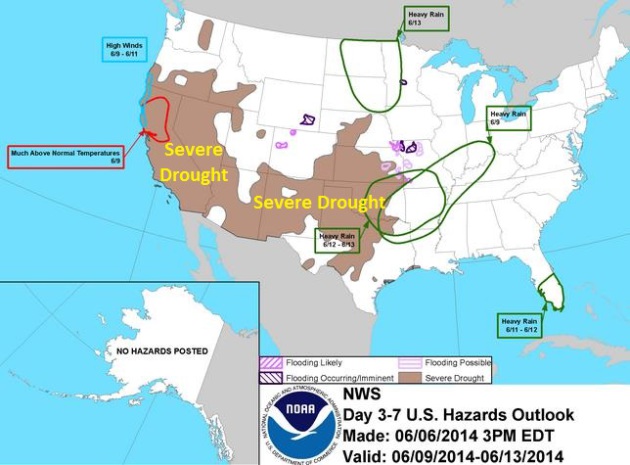
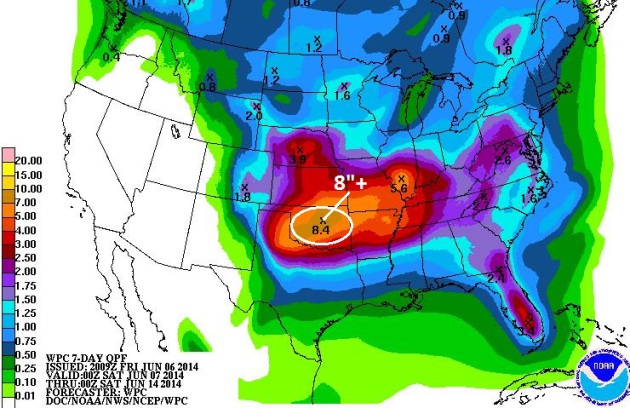

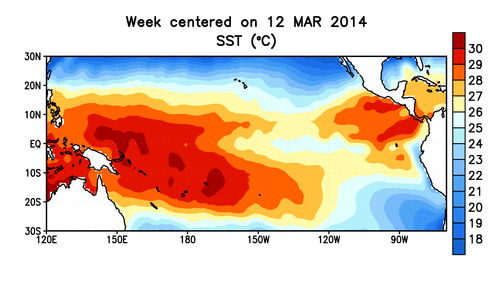

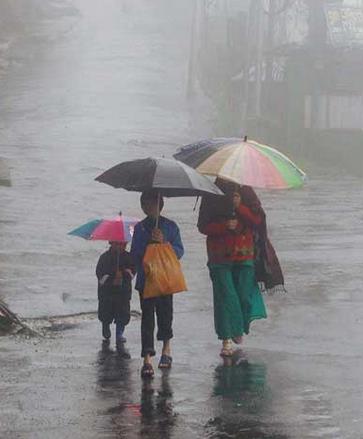


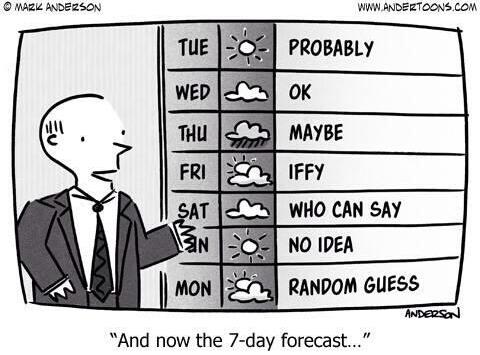

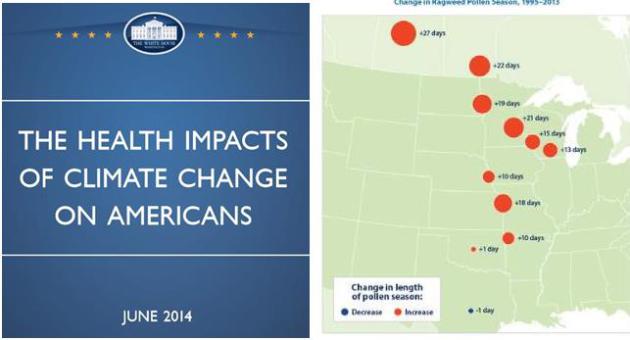
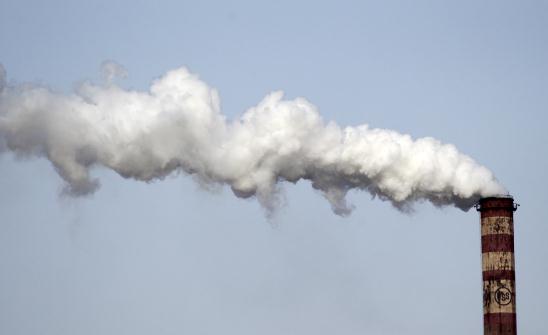
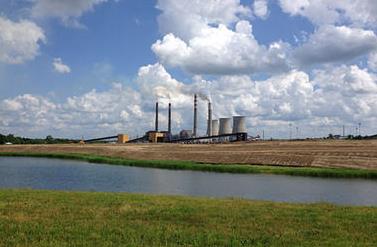
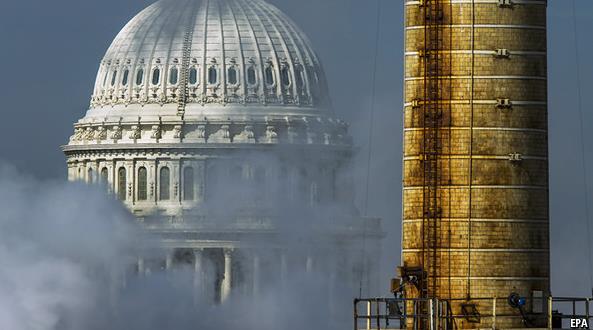

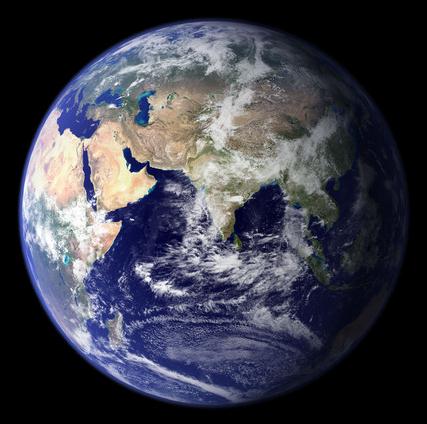
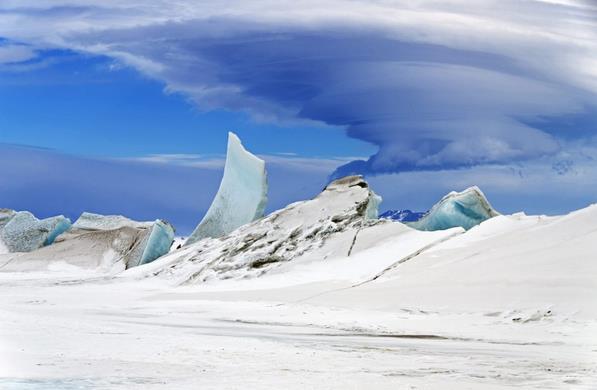
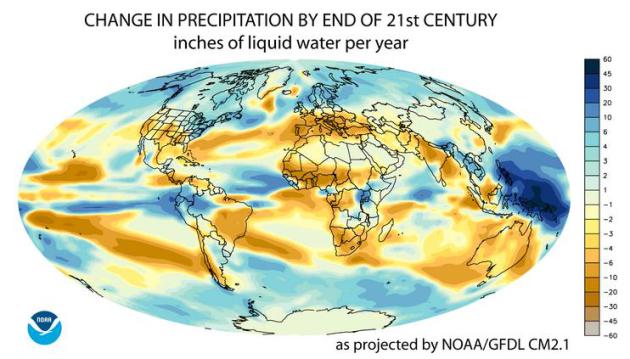
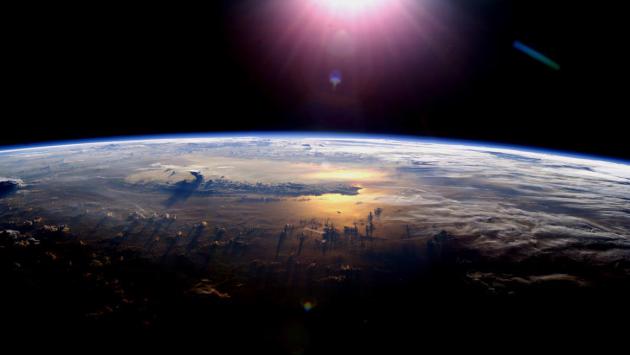
No comments:
Post a Comment